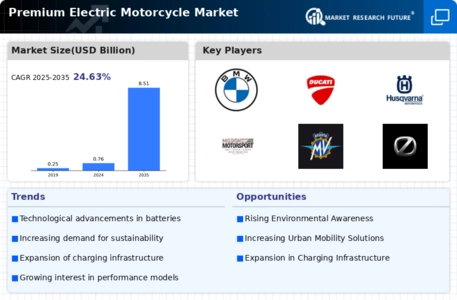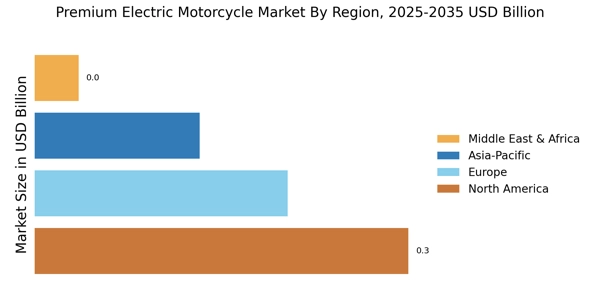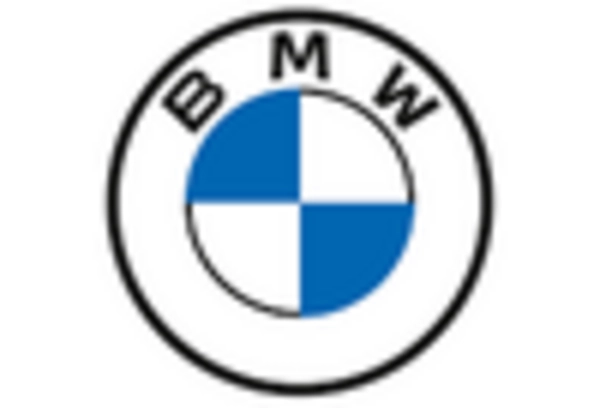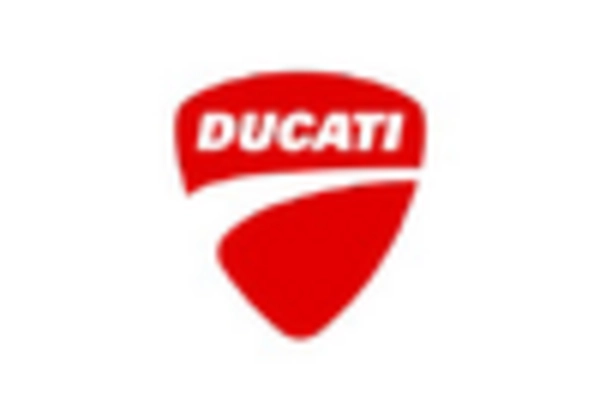Government Regulations and Incentives
Government regulations and incentives play a crucial role in shaping the Premium Electric Motorcycle Market. Many countries are implementing stricter emissions regulations, which are pushing manufacturers to develop electric alternatives. Additionally, various governments are offering tax credits, rebates, and grants to encourage the adoption of electric vehicles. For instance, in 2025, several regions are expected to provide incentives that could reduce the purchase price of premium electric motorcycles by up to 20%. This financial support not only makes electric motorcycles more accessible but also stimulates market growth. Consequently, the Premium Electric Motorcycle Market is likely to expand as more consumers take advantage of these incentives, leading to increased sales and market share.
Enhanced Consumer Awareness and Education
Enhanced consumer awareness and education regarding electric vehicles are contributing positively to the Premium Electric Motorcycle Market. As information about the benefits of electric motorcycles becomes more widely available, potential buyers are increasingly recognizing the advantages of electric over traditional motorcycles. This includes lower operating costs, reduced maintenance, and environmental benefits. In 2025, it is expected that educational campaigns and marketing efforts by manufacturers will further inform consumers about the features and benefits of premium electric motorcycles. As awareness grows, the Premium Electric Motorcycle Market is likely to experience increased interest and demand, leading to a more robust market presence.
Growing Urbanization and Traffic Congestion
The trend of growing urbanization and increasing traffic congestion is driving the Premium Electric Motorcycle Market. As urban areas become more densely populated, the need for efficient and compact transportation solutions is becoming more pronounced. Electric motorcycles offer a practical alternative to traditional vehicles, allowing riders to navigate through congested city streets with ease. In 2025, it is anticipated that urban areas will see a rise in electric motorcycle usage, as they provide a solution to the challenges posed by traffic congestion. This shift towards two-wheeled electric transportation is likely to enhance the appeal of the Premium Electric Motorcycle Market, as consumers seek convenient and eco-friendly commuting options.
Rising Demand for Sustainable Transportation
The Premium Electric Motorcycle Market is experiencing a notable increase in demand for sustainable transportation solutions. As consumers become more environmentally conscious, the shift towards electric vehicles, including motorcycles, is gaining momentum. In 2025, it is estimated that the electric motorcycle segment will account for approximately 15% of the overall motorcycle market. This trend is driven by the desire to reduce carbon footprints and reliance on fossil fuels. Additionally, government incentives and subsidies for electric vehicle purchases are further propelling this demand. The Premium Electric Motorcycle Market is thus positioned to benefit from this growing consumer preference for eco-friendly alternatives, which may lead to increased sales and market penetration.
Technological Innovations in Battery Technology
Technological advancements in battery technology are significantly influencing the Premium Electric Motorcycle Market. Innovations such as solid-state batteries and improved lithium-ion technologies are enhancing the performance and range of electric motorcycles. In 2025, the average range of premium electric motorcycles is projected to exceed 200 miles on a single charge, addressing one of the primary concerns of potential buyers. Furthermore, faster charging times and increased energy density are making electric motorcycles more appealing to consumers. As manufacturers continue to invest in research and development, the Premium Electric Motorcycle Market is likely to see a surge in new models equipped with cutting-edge battery technologies, thereby attracting a broader customer base.


















Leave a Comment